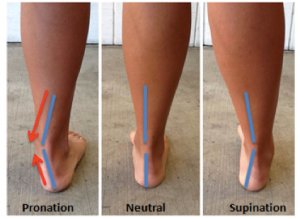
Exams can be Painful!
May 22, 2019
What is pain and how can you help the recovery?
June 2, 2019
What is Patellofemoral pain?
- Sometimes called “runner’s knee” or “jumper’s knee” is a broad term to describe pain around or behind the patella (kneecap), which is aggravated by at least one activity that loads the patellofemoral joint during weight bearing on a flexed knee.
- The pain it causes can make it difficult in different activities like: climb stairs, running, squatting and kneeling.
Risk factors:
- Training errors: rapid changes in loading parameters (doing too much, too soon)
- Decreased knee extension strength
- Decreased hip strength
- Low step rate (increase the reaction force in the patellofemoral joint)
- Running bio-mechanics:
Hip adduction / internal rotation, pelvic drop
Myths:
- Q-Angle
- Flat feet / pronation
Treatment
- Reduce load, favor repetition
Runner example: decrease training duration, avoid downhill and run more often.
- Slight pain permitted during and up to 1 hour after training (maximum intensity 2/10)
- Over-stepping the maximum to tolerate stress (1) will result in pain during the effort, pain after and morning stiffness. Under the minimum stress required to create adaptations (2) will not change anything. Appropriate stimulation (3) over the time will increase the body’s capacity to sustain mechanical stress.
- First 2 weeks of rehabilitation, it is recommended non-weight-bearing exercises, activating muscles without pain, focusing on hip abductors, hip external rotators, hip extensors and quadriceps strengthening.
- As soon as possible, its recommended to progress to weight-bearing exercises to add some load to the joint, doing squats with bands, step up and down exercises, multi direction strengthening and planks.
- In the last weeks of rehabilitation, its recommended to increase again the load by doing one leg exercises, adding more difficult to step exercises (adding bands for example) and eventually some jumps.
- Gait modifications in runners can be also recommended in order to decrease the knee loading (step rate, footwear, running soft and foot strike pattern).
- Tapping has proved effective to decrease symptoms and improve function.
Prognosis
The prognosis for patellofemoral pain is very good when it is provided the ideal treatment. The pain should be controlled from the first week of treatment. Even though the individuality of which person, the rehabilitation can range from 5 to 8 weeks, thus enabling the return to the activity (ideally with a better performance than before).
[ad_2]
Source link







